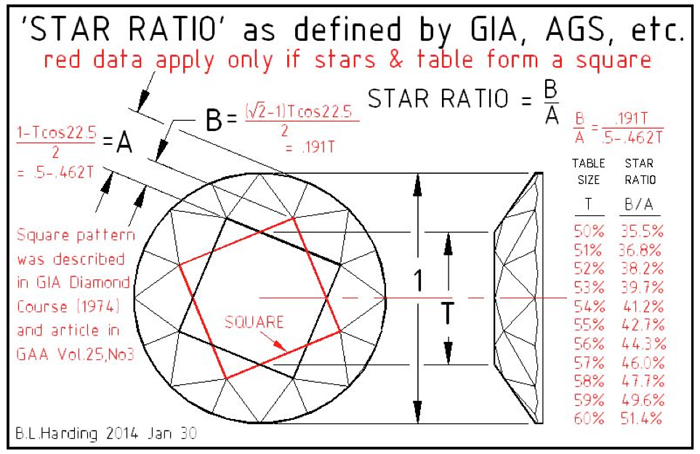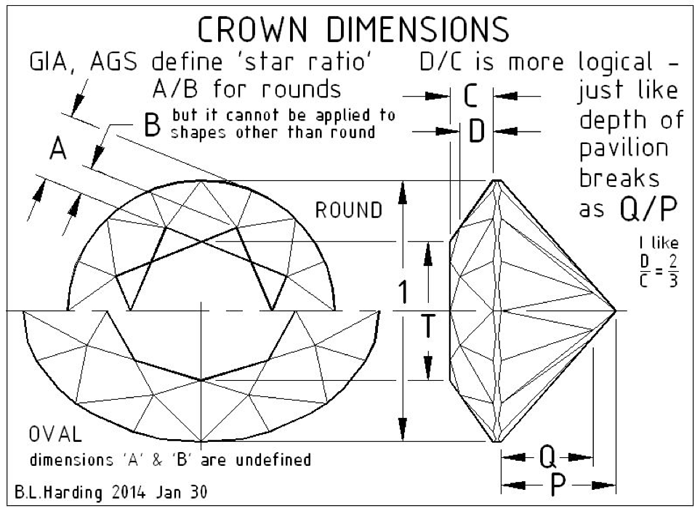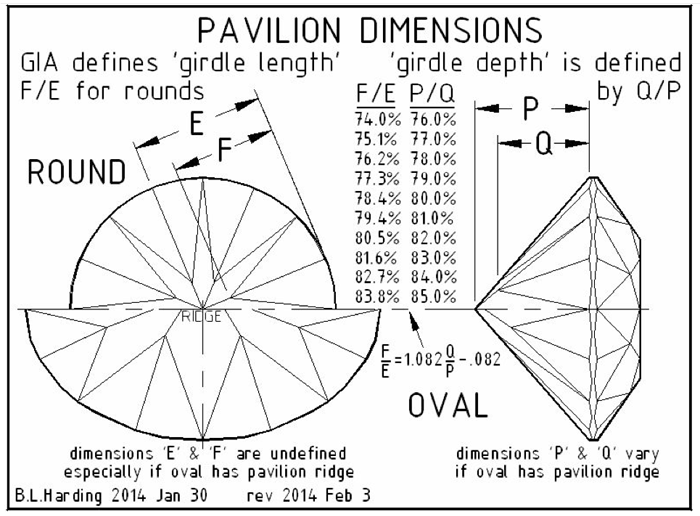The Finest Engagement Ring Brands
Choosing an engagement ring is a significant milestone in one’s life journey, and finding the perfect brand can make this experience even more memorable. Some brands stand out among the…
There have been inconsistencies and vagueness about how diamond dimensions are defined. This clarifies the terms and differences and suggests better alternatives. Due to QWERTYism* none of this will change.
The GIA Diamond Course (1974 for me), described the table and stars of a round brilliant as forming squares; this is also mentioned (but not endorsed) in the caption to Fig. 2.1 in ‘The Australian Gemmologist,’ Vol.25, No.3, p.87.
Some reports describe a ‘star ratio,’ which is defined, for instance, in GIA ‘Gems & Gemology,’ Fall 2004, p.209, Fig.2B as ‘Star Facet Length,’ using the ratio B/A shown here. Most cited values differ from those listed here.

The term ‘star ratio’ uses radial dimensions A and B while the depth of pavilion break facets is measured as a ratio of vertical dimensions Q and P shown here. Why not measure the height of the crown break facets in the same way, using ratio D/C? I like 2/3 for pattern appearance on ‘colored stones.’
A and B lose meaning if the gem is not a round brilliant, such as the oval shown in the lower half here; however. But the ratio D/C is just as valid for oval, pear, and cushion shapes.

GIA again defines pavilion break facets with radial dimensions E and F. The result is different from the ratio of vertical dimensions P and Q, which is used by other researchers. Some sample values are shown here for round brilliants (AGS lists more). Q/P may vary in cuts such as an oval with a pavilion ridge.

* Explanation why first line of typewriter is so: “It’s that way because it always was that way.”
by Bruce L Harding, February 7, 2014